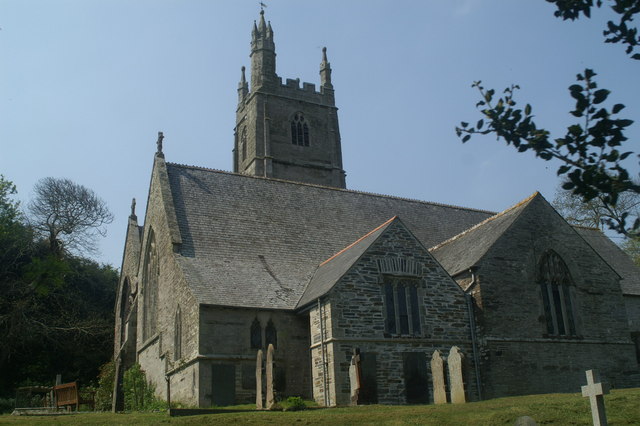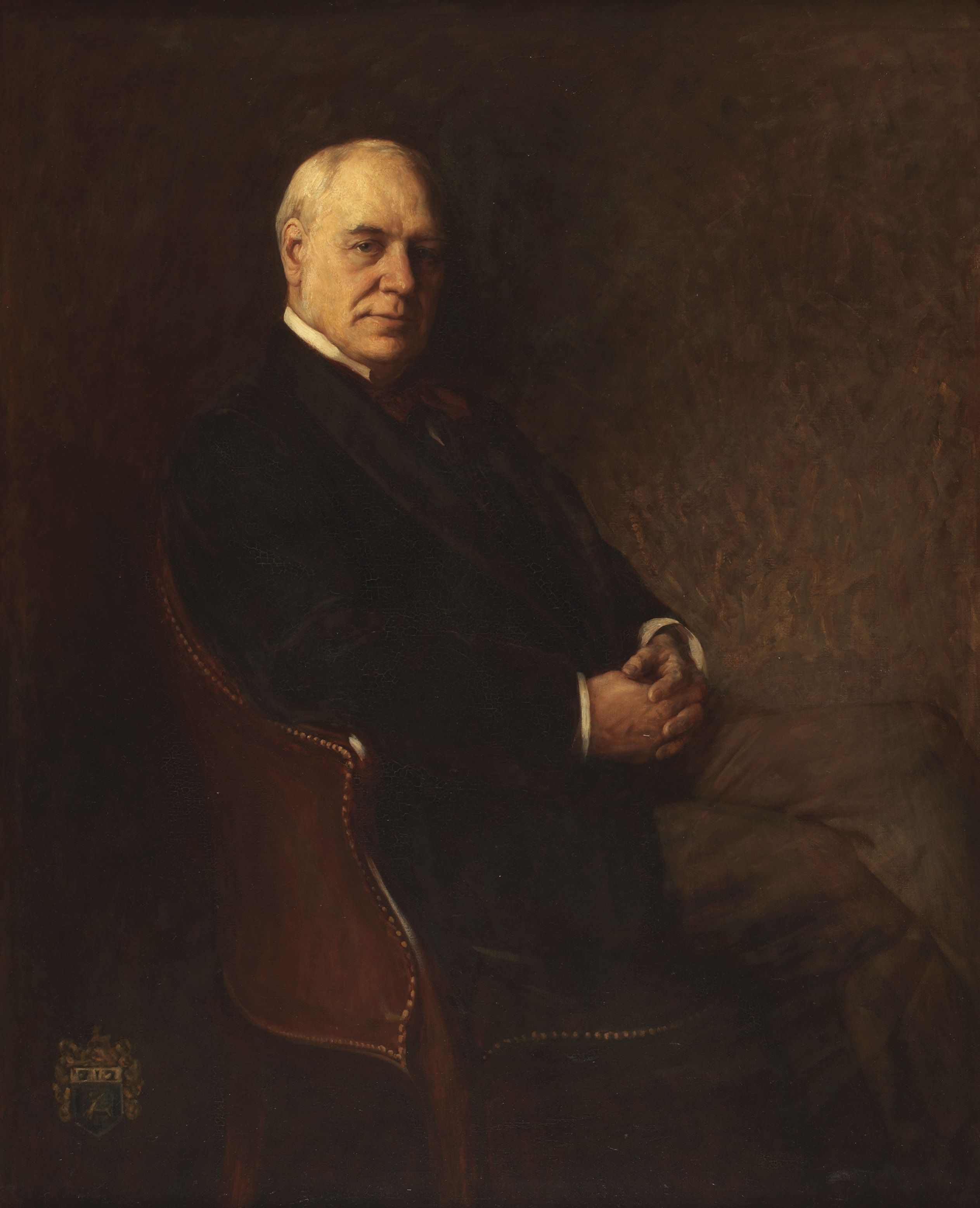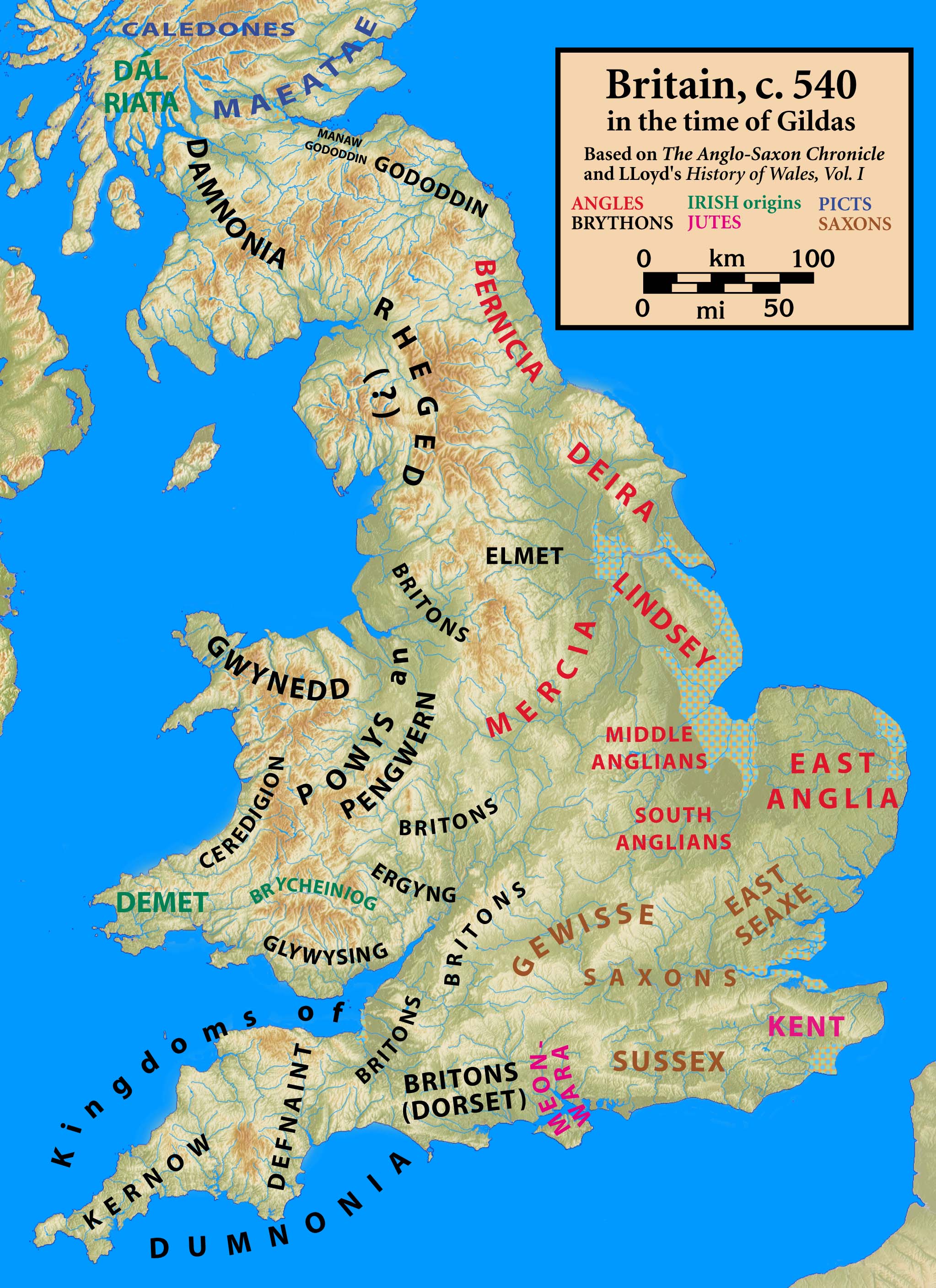|
Saint Meugan
Mawgan and Meugan (also Meigant) (Latin: ''Mauganus'') are names referring to either one or two Brythonic saints who flourished in the 5th or 6th century. __NOTOC__ Both names are widely attested in place-names and church dedications, Mawgan in Cornwall and Brittany and Meugan in Wales, but it is uncertain whether the names refer to one and the same person. The parishes of St Mawgan and Mawgan-in-Meneage in Cornwall derive their names from Mauganus. There is also a Machan in West Lothian (Scotland), as shown by the place-name Ecclesmachan, but again this may be a distinct figure. No hagiographical ''Life'' survives for Mawgan or Meugan, but figures bearing Latinised versions of either of these names appear in the ''Lives'' of Cadog and David. A saint called Maucan or Moucan features in an episode of the late 11th-century ''Life'' of Cadog, in which he arbitrates a quarrel between Cadog and Maelgwn, king of Gwynedd. A ''Life'' of David, also of the late 11th century, refers t ... [...More Info...] [...Related Items...] OR: [Wikipedia] [Google] [Baidu] |
St Mawgan
St Mawgan or St Mawgan in Pydar ( kw, Lanherne) is a village and civil parishes in England, civil parish in Cornwall, England, United Kingdom. The population of this parish at the 2011 census was 1,307. The village is situated four miles northeast of Newquay, and the parish also includes the hamlet of Mawgan Porth.Ordnance Survey: Landranger map sheet 200 ''Newquay & Bodmin'' The surviving manor house known as Lanherne House is an early 16th-century Listed building, grade I listed building. The nearby Royal Air Force station, RAF St Mawgan, takes its name from the village and is next to Newquay Cornwall Airport. The River Menalhyl runs through St Mawgan village and the valley is known as ''The Vale of Lanherne''. It was the subject of a poem by poet Henry Sewell Stokes. History There is evidence of Bronze Age and Iron Age settlements, though the village history proper is considered to start from the arrival of the Welsh missionary Mawgan, St Mawgan (or Meugan) and his follo ... [...More Info...] [...Related Items...] OR: [Wikipedia] [Google] [Baidu] |
Medieval Breton Saints
In the history of Europe, the Middle Ages or medieval period lasted approximately from the late 5th to the late 15th centuries, similar to the post-classical period of global history. It began with the fall of the Western Roman Empire and transitioned into the Renaissance and the Age of Discovery. The Middle Ages is the middle period of the three traditional divisions of Western history: classical antiquity, the medieval period, and the modern period. The medieval period is itself subdivided into the Early, High, and Late Middle Ages. Population decline, counterurbanisation, the collapse of centralized authority, invasions, and mass migrations of tribes, which had begun in late antiquity, continued into the Early Middle Ages. The large-scale movements of the Migration Period, including various Germanic peoples, formed new kingdoms in what remained of the Western Roman Empire. In the 7th century, North Africa and the Middle East—most recently part of the Eastern Roman ... [...More Info...] [...Related Items...] OR: [Wikipedia] [Google] [Baidu] |
Medieval Cornish Saints
In the history of Europe, the Middle Ages or medieval period lasted approximately from the late 5th to the late 15th centuries, similar to the post-classical period of global history. It began with the fall of the Western Roman Empire and transitioned into the Renaissance and the Age of Discovery. The Middle Ages is the middle period of the three traditional divisions of Western history: classical antiquity, the medieval period, and the modern period. The medieval period is itself subdivided into the Early, High, and Late Middle Ages. Population decline, counterurbanisation, the collapse of centralized authority, invasions, and mass migrations of tribes, which had begun in late antiquity, continued into the Early Middle Ages. The large-scale movements of the Migration Period, including various Germanic peoples, formed new kingdoms in what remained of the Western Roman Empire. In the 7th century, North Africa and the Middle East—most recently part of the Eastern Roma ... [...More Info...] [...Related Items...] OR: [Wikipedia] [Google] [Baidu] |
Medieval Welsh Saints
In the history of Europe, the Middle Ages or medieval period lasted approximately from the late 5th to the late 15th centuries, similar to the post-classical period of global history. It began with the fall of the Western Roman Empire and transitioned into the Renaissance and the Age of Discovery. The Middle Ages is the middle period of the three traditional divisions of Western history: classical antiquity, the medieval period, and the modern period. The medieval period is itself subdivided into the Early, High, and Late Middle Ages. Population decline, counterurbanisation, the collapse of centralized authority, invasions, and mass migrations of tribes, which had begun in late antiquity, continued into the Early Middle Ages. The large-scale movements of the Migration Period, including various Germanic peoples, formed new kingdoms in what remained of the Western Roman Empire. In the 7th century, North Africa and the Middle East—most recently part of the Eastern Roman ... [...More Info...] [...Related Items...] OR: [Wikipedia] [Google] [Baidu] |
Meneage
The Meneage ( kw, Menaghek or ''Manahek'') is a district in west Cornwall, United Kingdom. The nearest large towns are Falmouth and Penryn. (''Note: the coordinates above are the approximate centre of the Meneage district.'') The meaning of the name Meneage is "Monkish (land)" and the probability is that in the post-Roman period the land was in the possession of a confederacy of small Celtic monasteries. These may have been founded by missionaries from Brittany. "The north-eastern half of the Lizard peninsula ... has, for the last 1000 years at least and probably for a considerable time longer, gone by the popular name of Meneage, pronounced Menāgue. This name, like Roseland, has no official significance."— Gilbert H. Doble. The Meneage district is located south of the Helford River and is divided into four parishes and part of a fifth. From west to east these are St Mawgan in Meneage (part), St Martin in Meneage, Manaccan, St Anthony in Meneage, and St Keverne. *St Maw ... [...More Info...] [...Related Items...] OR: [Wikipedia] [Google] [Baidu] |
Mannacus
Mybbard and Mancus were two Cornish saints of the 6th century. Meubred Mybbard (Mewbred or Mebbred),also known as Calrogus was a 6th century hermit and is a local Cornish saint said to be the son of a King of Ireland. Very little is known of his life though he is recorded as having been beheaded, with two others, by the pagan ruler Melyn ys Kynrede in what is today the parish of Lanteglos-by-Fowey, near Fowey, Cornwall. He was later re-invented as an Irish prince. William Worcester names him as the son of an Irish king who became a Cornish hermit. He was a contemporary of St Mannacus and St Wyllow. An image of him carrying an extra head in his hands is included in a stained glass window in the church of St Neot alongside St Mabyn. He is said to be interred within the shrine (scrinio) of Cardinham Church. Mybbard is regarded as the patron saint of Cardinham. [...More Info...] [...Related Items...] OR: [Wikipedia] [Google] [Baidu] |
Bonedd Y Saint
The ''Bonedd y Saint'' or ''Seint'' (Welsh for "Descent of the Saints") is a Welsh genealogical tract detailing the lineages of the early British saints In religious belief, a saint is a person who is recognized as having an exceptional degree of holiness Sacred describes something that is dedicated or set apart for the service or worship of a deity; is considered worthy of spiritual res .... There are a number of different manuscripts in existence dating from the early 13th to the late 17th century, although the material is much older in origin. The book has also been known as ''Achau Saint Ynys Prydain'' ("Genealogy of the Saints" or "Pedigrees of the Saints of the Isle of Britain"). Citations References * *{{Citation , last=Phillimore , first=Egerton G. B. , year=1886 , editor-last=Powel , editor-first=Thomas , contribution=Boned y Seint (A Fragment from Hengwrt MS. No. 202) , contribution-url=https://books.google.com/books?id=5kAFAAAAYAAJ&pg=PA133 , title=Y C ... [...More Info...] [...Related Items...] OR: [Wikipedia] [Google] [Baidu] |
National Library Of Wales
The National Library of Wales ( cy, Llyfrgell Genedlaethol Cymru), Aberystwyth, is the national legal deposit library of Wales and is one of the Welsh Government sponsored bodies. It is the biggest library in Wales, holding over 6.5 million books and periodicals, and the largest collections of archives, portraits, maps and photographic images in Wales. The Library is also home to the national collection of Welsh manuscripts, the National Screen and Sound Archive of Wales, and the most comprehensive collection of paintings and topographical prints in Wales. As the primary research library and archive in Wales and one of the largest research libraries in the United Kingdom, the National Library is a member of Research Libraries UK (RLUK) and the Consortium of European Research Libraries (CERL). At the very core of the National Library of Wales is the mission to collect and preserve materials related to Wales and Welsh life and those which can be utilised by the people of Wales fo ... [...More Info...] [...Related Items...] OR: [Wikipedia] [Google] [Baidu] |
Mawgan-in-Meneage
Mawgan-in-Meneage is a civil parishes in England, civil parish in Cornwall, United Kingdom. It is situated in the Meneage district of The Lizard, The Lizard peninsula south of Helston in the former administrative district of Kerrier. The parish population at the 2011 census was 1437. Mawgan-in-Meneage lies within the Cornwall Area of Outstanding Natural Beauty (AONB). Almost a third of Cornwall has AONB designation. Antiquities Evidence of early medieval habitation at Mawgan is in the form of an inscribed pillar stone, located at the meeting of three roads at the centre of the village; it bears an inscription that is no longer readable, but based on an old drawing and a photograph taken in 1936 it could have been a memorial stone to either 'Cnegumus son of Genaius' or 'Genaius son of Cnegumus'. The date of this inscription is not certain beyond having been carved before the twelfth century. History The name of the manor was given as "scanctus [sic] mawgan" after the dedicati ... [...More Info...] [...Related Items...] OR: [Wikipedia] [Google] [Baidu] |
National Library Of Wales General Manuscript Collection
The General Manuscript Collection of the National Library of Wales includes three series of manuscripts: NLW Manuscript series; NLW ex series of Manuscripts; and, NLW Rolls. All manuscripts acquired by the library through either donation or purchase are added to this open-ended series, either singly or in groups, if they are: a) in a format compatible with the collection, i.e. manuscript books or rolls, or unbound material that can be filed; and, b) not integral to an archive or individual collection. There is, however, much archival material, mostly correspondence, held in the General Manuscripts Collection. The holdings in the General Manuscript Collection are catalogued in the ''Handlist of manuscripts in the National Library of Wales,'' which focuses on those manuscripts in the National Library which are not part of the foundation collections; there were over fifteen thousand when the first volume of the handlist appeared in 1940, and the collection had increased to 23,233 by 3 ... [...More Info...] [...Related Items...] OR: [Wikipedia] [Google] [Baidu] |
Maelgwn Of Gwynedd
Maelgwn Gwynedd ( la, Maglocunus; died c. 547Based on Phillimore's (1888) reconstruction of the dating of the ''Annales Cambriae'' (A Text).) was king of Gwynedd during the early 6th century. Surviving records suggest he held a pre-eminent position among the Brythonic kings in Wales and their allies in the " Old North" along the Scottish coast. Maelgwn was a generous supporter of Christianity, funding the foundation of churches throughout Wales and even far beyond the bounds of his own kingdom. Nonetheless, his principal legacy today is the scathing account of his behavior recorded in ''De Excidio et Conquestu Britanniae'' by Gildas, who considered Maelgwn a usurper and reprobate. The son of Cadwallon Lawhir and great-grandson of Cunedda, Maelgwn was buried on ''Ynys Seiriol'' (now known as Puffin Island in English), off the eastern tip of Anglesey, having died of the "yellow plague"; quite probably the arrival of Justinian's Plague in Britain. Name ''Maelgwn'' (IPA: /mɑːɨlgʊn/ ... [...More Info...] [...Related Items...] OR: [Wikipedia] [Google] [Baidu] |









